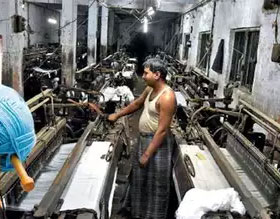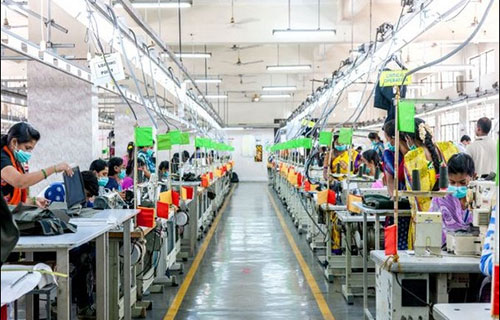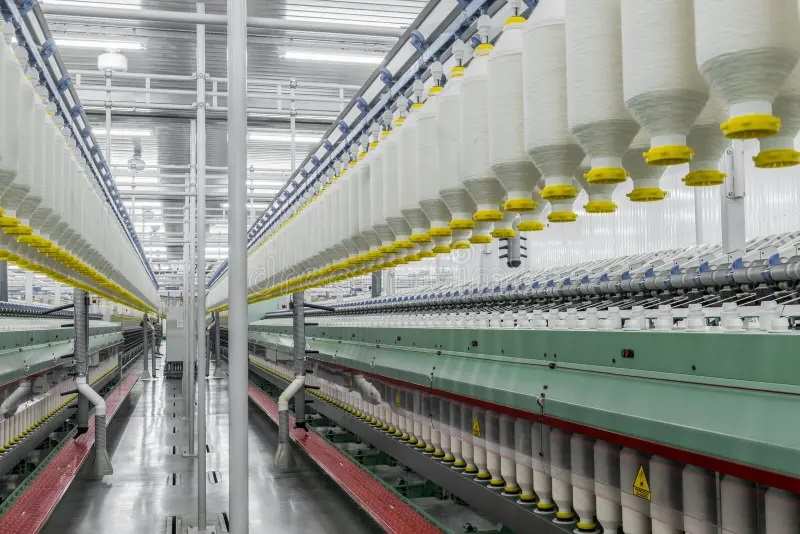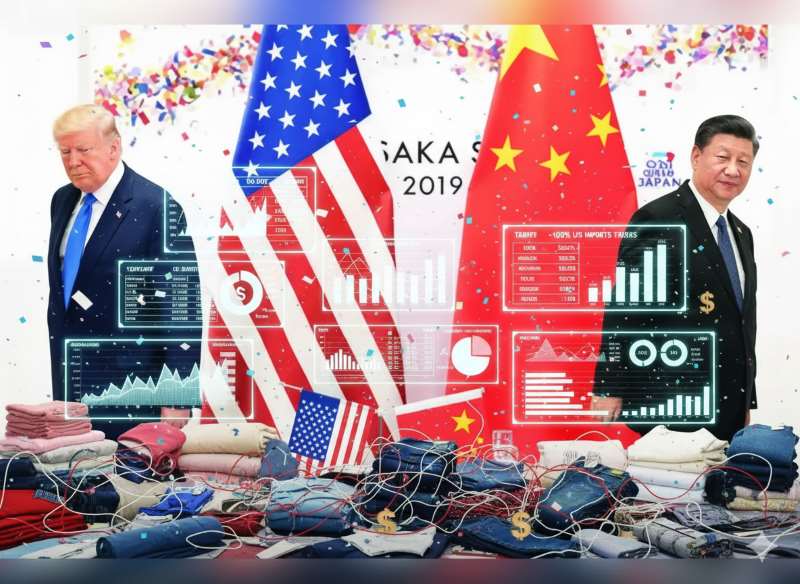FW
F&F will incorporate Lycra T400 fiber with EcoMade technology into the F&F Contour Jean Range with Lycra Beauty fabric. This will make the range not only F&F’s most popular but also one of the brand’s most sustainable jeans offerings. The F&F Contour Jean with Lycra Beauty fabric was launched three years ago and became F&F’s best-selling jeans range. The high-performance fabric ensured that the product delivered on its promise to comfortably shape the wearer’s curves with no sagging or bagging. Now, with the upgrade to Lycra T400 fiber with EcoMade technology, the jeans will maintain all its previous features and good value-for-money offering while providing customers with a more sustainable option.
Lycra T400 fiber with EcoMade technology is made from a combination of recycled materials, such as PET bottles and renewable plant-based materials. The original Lycra T400 fiber is the building block for the brand’s popular Lycra dualFX technology – a small percentage of this fiber gives the performance-enhancing results. Lycra T400 fiber with EcoMade technology offers the same benefits of lasting comfort, fit and performance as the original, but with the value-added offer of sustainability.
Since introducing Lycra Beauty technology into its jeans, F&F’s denim business has grown by 40 per cent.
Bangladesh is expected to grow at eight per cent this year, the highest in Asia. The country continues to be among the fastest growing economies in Asia and the Pacific. Buoyant exports, robust private consumption, higher remittance, accommodative monetary policy and ongoing reforms to improve the business climate and high infrastructure spending are helping Bangladesh.
Favorable trade prospects are expected to continue. Exports and remittances are likely to be further strengthened. Strong public investment and expedited implementation of large infrastructure projects are also envisaged.
Public investment expanded from eight per cent to 8.2 per cent and total investment contributed 2.8 percentage points to growth. But private investment edged up to 23.4 per cent in fiscal 2018-19 from 23.3 per cent a year earlier. Apart from that, private sector credit growth slowed to 11.3 per cent from 16.9 per cent, partly due to a decline in deposit growth. Inflation is expected to edge up to 5.8 per cent from 5.5 per cent on upward adjustments to domestic gas prices, higher price of goods and services due to expansion in value-added tax coverage, and the depreciation of the currency against the dollar. The revenue shortfall is expected to be offset by lower public spending, holding the budget deficit under the ceiling of five per cent of GDP.
"Credit rating agency ICRA’s latest research suggests, Indian apparel exports will continue to grow for the rest of the year, however the pace of growth will slow down as multiple challenges looming on the horizon, are a challenge for exporters to meet targets. Reviving after two consecutive years of decline, apparel exports in India are growing by 4 per cent Y-o-Y during four months FY2020. This growth is primarily driven by a 7 per cent Y-o-Y increase in exports to the US market, while exports to the key European and the UK markets have fallen by 2-3 per cent Y"
 Credit rating agency ICRA’s latest research suggests, Indian apparel exports will continue to grow for the rest of the year, however the pace of growth will slow down as multiple challenges looming on the horizon, are a challenge for exporters to meet targets.
Credit rating agency ICRA’s latest research suggests, Indian apparel exports will continue to grow for the rest of the year, however the pace of growth will slow down as multiple challenges looming on the horizon, are a challenge for exporters to meet targets.
Reviving after two consecutive years of decline, apparel exports in India are growing by 4 per cent Y-o-Y during four months FY2020. This growth is primarily driven by a 7 per cent Y-o-Y increase in exports to the US market, while exports to the key European and the UK markets have fallen by 2-3 per cent Y-o-Y. In addition, India’s position has also been adversely affected by the preferred access to key competing nations such as Bangladesh and Vietnam, through free trade agreements. These trade agreements including the Comprehensive and Progressive Agreement for Trans Pacific Partnership (CP TPP) and EU-Vietnam Free Trade Agreement, are making it increasingly difficult for Indian apparel exporters to maintain their competitiveness in the EU market.
Compliance issues and lack of reliable supplier base pose challenges
Besides these challenges, discouraging retail trends in the US are also exerting additional pressure on order flow of Indian apparels. Sales of clothing and clothing accessories in the US have largely remained flat during 8 months of current fiscal vis-a-vis the corresponding period last year 4.6% during CY2018. This could potentially result in renegotiation of realisations as well as elongated receivable cycle for the exporters.
of Indian apparels. Sales of clothing and clothing accessories in the US have largely remained flat during 8 months of current fiscal vis-a-vis the corresponding period last year 4.6% during CY2018. This could potentially result in renegotiation of realisations as well as elongated receivable cycle for the exporters.
Though currently large buyers in the US face huge exit barriers both in the form of compliance requirements and lack of a reliable supplier base for large quantities, their position will become clearer once the trade data for Q4 ’19 is released as it will also factor in the additional 15 per cent tariffs that become effective from September 1, 2019. Though large Indian exporters can benefit from this opportunity, they would first have to scale up their operations, maintain strict delivery schedules and meet stringent compliance requirements of the buyers in a short span of time.
Government schemes for exporters
The Indian government has also taken some steps which could provide a relief to the Indian apparel exporters. It has introduced a new scheme called Remission of Duties or Taxes on Export Products (RoDTEP) recently in September 2019.The scheme aims to replace all existing export incentive schemes besides adequately incentivising exporters. This would stablise the growth of domestic apparel exporters at 8-10 per cent during FY20. Renegotiation of apparel realisations by key buyers amid a slowdown in retail demand and continued competitive pressures from peer nations, together with high raw material costs and higher air freight charges are likely to put a pressure on margins.
No major impact on small companies
The impact though, is expected to be cushioned by the transitory increase in export incentives till December 2019, post the replacement of ROSL with ROSCTL. As a result, large exporters may report range-bound operating margins vis-a-vis last year. The sector is likely to witness a slight correction owing to higher working capital requirements amid elongated receivable turnover period. Nevertheless, it will remain largely comfortable. The slowdown will mainly affect smaller companies who have limited bargaining power and depend on smaller US retailers. However, as a large proportion of such entities already have weak credit profiles and fall in the non-investment grade categories, no major movements are expected in their credit ratings.
Yarn manufacturers in Bangladesh are grappling with unsold stocks. Demand for locally manufactured yarn and fabrics have fallen amid decreased work orders. On the other hand, fabrics imported illegally by apparel makers by misusing the bonded warehouse facilities are taking a toll on the sector. It was assumed that work orders would flow into the sector due to the ongoing US-China trade war. But it has not happened as China has offered its manufacturers incentives while fabrics and yarn are entering Bangladesh by way of wrong declarations.
Apparel makers in Bangladesh prefer imported yarn and fabrics, which are cheaper than what’s made within the country. Bangladesh’s currency has gained against the dollar and eaten up the competitive edge. China and other countries offer better prices on yarn and fabrics as they have devalued the dollar while they have their own cotton against Bangladesh’s zero production.
There are 430 yarn manufacturing mills, 802 fabric manufacturing mills, and 244 dyeing-printing finishing mills in Bangladesh. In August, the apparel sector, which accounts for 84 per cent of national exports, witnessed a 11.46 per cent decline. Global buyers are not placing orders as the production cost in Bangladesh has gone up due to the new wage structure.
World Fashion Convention will be held in Pakistan from November 12 to 13, 2019. The main focus is to highlight the image of Pakistan, update participants about what Pakistan produces and ensure interaction among Pakistan exporters and international textile chains. The mega fashion show is expected to attract delegates from over 45 countries. There will be panel discussions, lectures and workshops about the textile and garment industry of Pakistan. A fashion competition will educate young fashion designers about sustainable design techniques and theories, besides providing a platform for aspiring designers. The competition will challenge young designers to put their creative powers to the test by proving their ability to transform textile waste into wearable, appealing and commercially viable products.
This convention organised by the International Apparel Federation caters to apparel industry leaders from across the supply chain, from all continents. Top speakers from across the globe will cover the width of the supply chain, from raw materials to apparel sourcing and from production to retail trends. On top of that, the convention provides an excellent opportunity to meet the global industry in one location. Delegates, many of whom would be visiting Pakistan for the first time, will review Pakistan’s products, and the standard of its textile and garment companies.
Indian textile and clothing industry is facing a severe liquidity crisis mainly due to the huge accumulation of dues, especially TUF subsidies.
The industry has requested that the dues and TUF subsidies be released along with stimulus measures such as debt restructuring, e-auctioning of CCI procured cotton and extension of export credit. Consequent to the 28 per cent increase in the minimum support price for cotton, Indian cotton has become expensive when compared to international cotton prices, making Indian cotton and textile products uncompetitive in export markets.
This has resulted in a sizeable increase in imported cotton during the current season. The country is likely to end with over 50 lakh bales in closing stock for the current season due to reduced exports and increased imports. The cotton spinning sector is currently facing an unprecedented crisis due to the excess production capacity to the tune of seven million spindles. This was created taking advantage of incentives offered by the textile policies of states like Gujarat, Maharashtra and Andhra Pradesh. Cotton yarn consumption in the domestic market has stagnated during the last four years. The 35 per cent fall in yarn exports in recent months has aggravated the situation. The sluggish demand has severely affected cotton farmers as the country is left with excess cotton production.
Lenzing will use blockchain technology to support its Tencel branded fiber business. This will ensure complete transparency and traceability for brands and consumers of its fibers in the finished garment. The supply chain transparency from wood to garment and home textiles will enable all customers and partners to identify Tencel fibers and the respective wood source in each production and distribution step. Thanks to a QR code on the final garment, consumers will be able to detect the origin of the clothes they intend to buy.
Lenzing, the world market leader in specialty fibers made from renewable material wood, is strengthening its leading position in sustainability in the textile industry. With Ecovero branded fibers Lenzing was the frontrunner in physical traceability and is now entering the age of digital traceability. Lenzing has issued blockchain based Tencel fiber coins to its supply chain partners in direct relation to physical shipments. These digital tokens serve as an authentication mechanism against any adulteration and provide secure digital chain-of-custody across the entire textile value chain. Lenzing is carrying out further pilot tests over the next few months involving partners along the entire value chain.
Consumers increasingly want to understand the ingredients and suppliers of the products they buy, requesting a new level of transparency and traceability.
H&M’s fall/winter line is made of sustainable materials like recycled polyester, recycled brass, recycled zinc and a blend of Tencel and Refibra. Inspired by masquerade balls, the collection includes eveningwear such as softly tailored check separates, figure-fitting dresses and oversized hoodies, in an earthy color palette of light neutrals, black, with pops of orange and red.
On the lookout for new innovations, new fabrics and new processes, H&M wants to show sustainable fashion doesn’t have to look boring or beige or like a burlap sack. The vision is to lead the change towards a circular and renewable fashion industry while being a fair and equal company. Using its size and scale, it is working to catalyze systemic changes across its operations, its entire value chain and the wider industry. The aim is to engage customers and provide great fashion and design choices. About 57 per cent of all materials for H&M’s products are recycled or other sustainably sourced materials. Ninety-five per cent of cotton used by H&M is recycled or otherwise sustainably sourced.
Today, fashion and sustainability is no longer a contradiction in terms. Reusing and recycling is an important initiative across fashion. Fashion-forward designs are being made from recycled materials.
Indian apparel exports to European markets and the UK declined by two or three per cent during the first four months of the fiscal. In addition to a general slowdown in EU’s import demand amid currency weakening, India’s position in the EU has been adversely affected by the preferred access to key competing nations such as Bangladesh and Vietnam, by way of free trade agreements.
While the trade war has opened up opportunities for Indian apparel exporters, there are doubts if they will be able to grab it. It would require companies to scale up their operations, maintain strict delivery schedules and meet stringent compliance requirements of the buyers in a short span of time.
Export incentives will play a crucial role in determining the ability of apparel exporters to garner a larger pie of the global apparel trade. While these incentives have proved partially useful, they have not helped Indian apparel manufacturers compete on price with their competitors. Some Indian apparel makers feel they can shift their existing manufacturing to Vietnam and Bangladesh to benefit from tariff arbitrage, labor laws, low wages, conducive business environment and, hence, better return on capital employed.
Despite Africa facing a sharp fall in global investment, Jiangsu Sunshine Group has decided to expand production in Ethiopia by about a third. The group recently held a recruitment drive in the country that received an overwhelming response. Three batches of 145 Ethiopian undergraduates were recruited for one-year training in China and the first batch went back to Ethiopia in March.
Zhao Jiang, Director-Operations, Sunshine Ethiopia Wool Textile, Jiangsu Sunshine Group feels, the country is rich in human resources with a labor force of over 50 million. It also has abundant water and power resources, without any tariffs when exporting to Europe and America.
The company began considering establishing their first overseas factory in Ethiopia in 2015 to offset the increasing labor cost in the domestic and preferential policies under the BRI.












